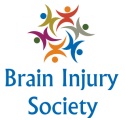
Sometimes people slip and fall, and the only thing they believe that they hurt is their pride. Others might not feel anything significant until the next day when they begin to feel pain, discomfort and limited range of motion. Those symptoms might mean something more serious. That is when it is time for them to be examined.
When somebody trips and falls, it is also classified as a slip and fall injury. The physics of the two accidents are actually different though. When a person slips and falls, it is ordinarily caused by a foreign substance that makes a walking surface slippery. The person usually falls backward. In a trip and fall, an uneven surface is usually the cause of the accident, and the person falls forward. The direction in which somebody falls influences the nature and extent of their injuries. Age plays a factor too. It only takes a second for a slip and fall or trip and fall to change a person’s life. Some of the most common and painful injuries that result from slips, trips and falls include:
Traumatic brain and spinal cord injuries
According to the Centers for Disease Control and Prevention (view article), falls are attributable to over 35 percent of all traumatic brain injuries (TBIs), particularly when falling backward. These TBIs range from concussions to permanent brain injuries with cognitive impairment to fatal brain injuries. The whiplash motion of the head and neck during the process of falling can also result in spinal cord injuries. Falls contribute to about 25 percent of all spinal cord injuries. Many are permanent. People suffering from permanent spinal cord injuries face a lifetime of high costs of care.
Fractures
The direction of a fall can even influence whether a fracture might occur. Somebody who grabs onto an object like a railing while falling is more likely to fracture a wrist or arm. Falling down on one’s buttocks can result in a hip fracture as can falling to one side. Hip fractures are often problematic. Any fracture is painful, but most people over 65 do not return to completely independent living after a hip fracture.
Shoulder injuries
Falling in any direction can cause a shoulder injury, particularly if you land on it or try to break your fall with your hands when tripping and falling forward. The rotator cuff is the anatomical structure that holds the ball joint of your upper arm to its proper location in the shoulder socket. Sprains, strains and tears to this anatomical structure can be particularly painful when raising an arm or even when walking. Gravity is always pulling an injured shoulder down and working against it. That results in significant pain.
Injuries to the knees
We use our knees every time we take a step. They help carry most of our body weight. Cartilage, ligament damage or even dislocations can occur from sudden twisting, either while trying to prevent a fall or from the trauma of falling. Because our knees bear so much weight, and we use them with every step that we take, knee injuries can be particularly painful. Just ask a former professional athlete about knee pain. The bigger they are, the more their knees hurt.
Neck and back injuries
You do not have to be in a car accident to suffer a whiplash injury. The sudden jerking motion of a fall can result in headaches, severe neck pain and limited range of motion along with numbness and tingling in the arms and hands. Although this eventually resolves for some people, others are in significant and permanent pain and discomfort. Lower back injuries from a slip and fall carry the same symptoms, only they are in the buttocks, legs and feet. Those symptoms might indicate a herniated disc or compression fracture.
According to the National Institute of Health, an estimated 14 million Americans suffer from severe chronic back pain and/or extremity pain (pain fact sheet). Many of those are in and around Phoenix and suffer that pain because of falls. Slip and falls and trip and falls aren’t thought of as severe, but some victims become permanently disabled from them every day. A fractured wrist, torn rotator cuff or fractured hip can leave a person in pain for life.
Slip and falls and trip and falls involve complex litigation. Although products at the supermarket might purposely be displayed at eye level, the store owner will blame you for your fall for not watching where you were going. If you’re experiencing chronic pain from a slip and fall or trip and fall, it is likely that it will not be going away.
